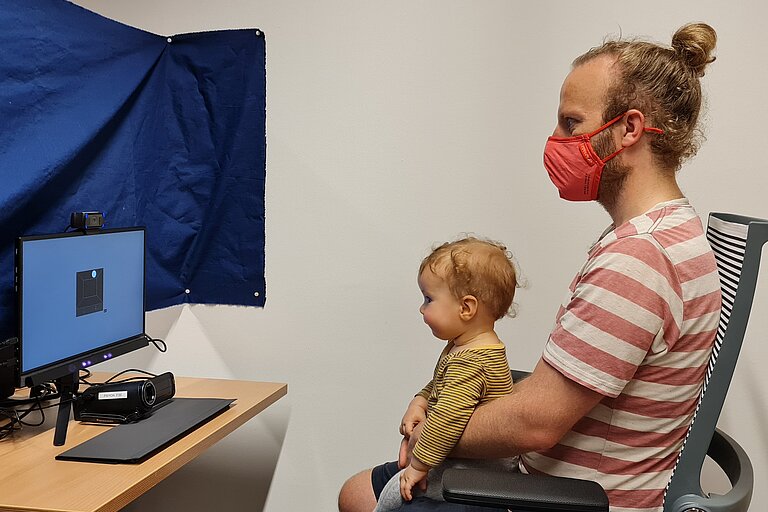Eye Tracking


Studying mental processes in preverbal infants and non-human populations comes with central methodological challenges, for example: How can we infer what an infant thinks or knows, and how can we study how this develops over the course of ontogeny? How can we infer what other animals think or know, and how can we compare the knowledge we gain with what people think or know?
One way to overcome these challenges is to measure where an individual looks at, using eye-tracking technology. The underlying assumption of eye-tracking studies is that the way, the duration, and the timing in which an individual looks at events can give us insights into many psychological dimensions ranging from basic attention to more complex constructs such as motivation or memory. In addition to measuring gaze movements and looking times, we use eye-tracking technology for measuring changes in pupil size (“pupillometry”).
State-of-the-art eye-tracking technology allows to track the eye movements of humans and apes from infancy to adulthood. It therefore offers a valuable methodological approach in developmental, cross-cultural, and comparative research. We conduct exclusively non-invasive eye-tracking using remote devices with Pupil Center Corneal Reflection (PCCR) technique.
In our typical study setup, we present the participants with images and videos on a screen, measuring their eye gaze and/or pupil size using an eye-tracking device positioned at a distance in front of the individual. In our studies with infants, the participants sit on the lap of their parent while watching the videos. In our comparative studies at the WKPRC, participants are chimpanzees, bonobos, orang-utans, and gorillas of varying ages, from infancy to adulthood. To keep the apes motivated, we typically feed them with juice while sitting in front of the screen.
Compared to human eye-tracking, the application of this technology with great-apes is a relatively younger field of research. Thus, in addition to using the method for addressing our empirical questions, some of our research projects aim to contribute to efforts seeking to develop the method for its application with non-human primate populations and in remote field settings further.